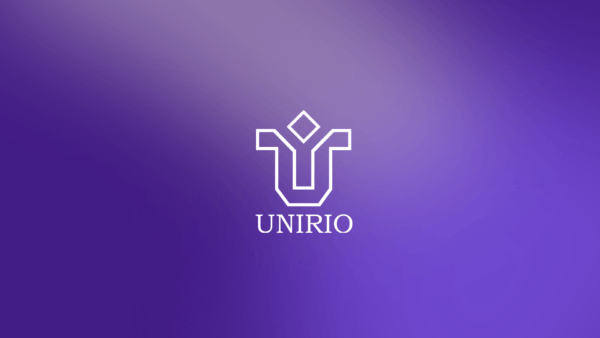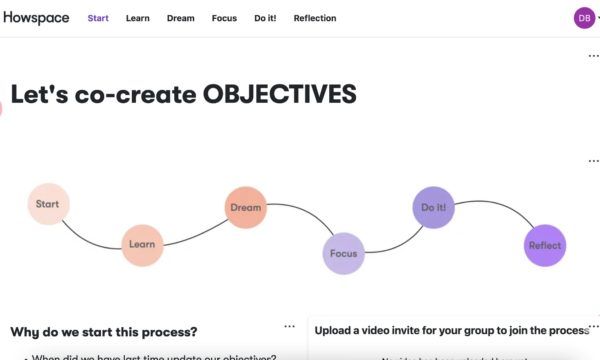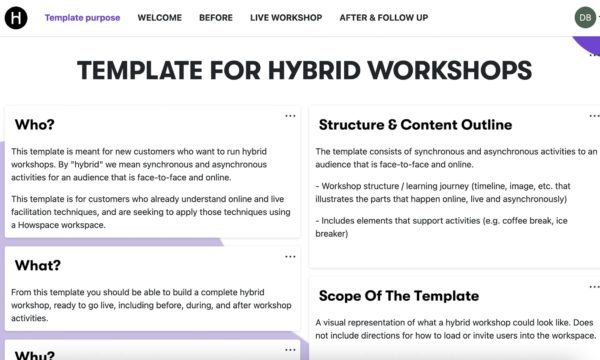
The Trade Union of Education (OAJ)
Trade union OAJ drives for greater inclusion and membership engagement
Challenge
The Trade Union of Education in Finland (OAJ), one of the largest trade unions in the country, have found it more and more difficult to get new members. Young professionals who enter the field—the ones who are constantly shaping and developing their work—no longer automatically see value in belonging to a union.
Solution
OAJ realized it needed to try something new and challenge old methods. They used Howspace to invite all of its members to take part in building a new strategy together.
Results
The way nonprofits work is currently transforming. This is a challenge to all organizations in the field today, including the Trade Union of Education in Finland (OAJ), one of the largest trade unions in the country. The union feels that its activities need to change, its members need to feel part of the community, and diverse content – and value – need to be provided for them. According to Juha Makkonen, OAJ’s Development Manager, the change is not only happening in the union’s activities but also in the field of education in general – and it is in full swing.
“Our union’s entire apparatus is based on people; we need thousands of players in the field. However, it has been more and more difficult to get new members as of late. Individual members don’t feel they are able to find ways to influence or participate in the union’s activities, and people are a little more critical towards what the union has to offer than before. Young teachers, in particular, don’t seem to feel like the union is for them.”
The OAJ’s purpose is to look after the interests of professionals in education, training, and research, from those in early childhood education to adult education. According to Makkonen, teachers and young people who enter the field and are constantly shaping and developing their work no longer automatically see the value in belonging to a union. When joining is not a matter of course for the younger generation of teachers, the value offered by the union must be successfully transmitted in new ways.
Members involved in strategy and reform work
According to Makkonen, the OAJ is in the same boat as many other unions and organizations. In terms of its degree of organization, it is one of the most active unions and currently has 120,000 members in its ranks.
“Teachers are often safety-oriented. Changes may be viewed with caution. Therefore, we want to encourage all of our members to try something new and challenge old methods. We want to provide a suitable way to practice new working methods. New experiments are also important to secure the union’s future.”
In this spirit, the OAJ decided to work on its strategy in a new way: by inviting all of its members to take part in building it. The project was easy to kick off because Finnish teachers are very familiar with using digital tools, and experimenting with digital working methods is not strange or foreign to them.
“We launched our strategy work in an inclusive way by utilizing our existing regional-members-only evenings. Our goal was to inform our members about the wage agreement negotiations that were going on, to map out needs and goals, and to include them in the strategy and reform work as widely as possible,” Makkonen explains.
At the events, members were asked about their needs and ideas. They were given the opportunity to vote on which topics are the most important challenges to solve in the coming years.
“The experiences of the participants were great. During the 22 member-only evenings we held, we managed to involve about 1,000 delegates in strategy work. People felt they had been heard and that writing about matters on the platform felt natural – even though the initial reception had been slightly cautious in part. We encouraged everyone to remove any mental filters and boldly tell us what is not working in our operations and what kind of development is needed. In all of this, we succeeded.”
Values are visible in all operations: Strategy work is done inclusively and by listening to members
In addition to the members-only evenings, thousands of people were also included in the strategy work completely digitally. After the events, a further 10,000 members were invited separately to join, a third of whom took part in the work that was carried out on Howspace.
“The static surveys we had done previously hardly made people actually participate in the development of our operations. People tend to get a lot of surveys, and their effect is not exactly engaging. With the help of Howspace, we were able to produce material that was distinctly different to anything we had done previously. In addition, we were able to make our values visible in our operations. The strategy work was a genuinely good example of what we always aim for, which is to be inclusive, listen to our members and meet their needs. This achievement will certainly be reflected in our operations in the future.”
The use of a digital platform also helped in summing up the OAJ’s strategic discussion. Howspace’s artificial intelligence compiled and interpreted responses, which was very helpful in dealing with large volumes of discussions.
“Using Howspace is easy, and everyone can join the discussion with basic digital skills. There was no need for external technical support. The discussion was not moderated. People shared their thoughts in an extremely objective and responsible way.”
These positive experiences have led the OAJ to use Howspace in other activities as well. The digital platform has played a key role in the inclusion of internal committees and student members. In addition, it has rejuvenated council work and foresight initiatives.
“We already have more plans for the future. Howspace would be a great fit for member inclusion and training, for example. It has also been inspiring to hear the experiences of other unions and organizations in expanding their work by using Howspace. That’s how I initially got interested in the platform: by listening to the experiences of others. That’s the path I am still on.”
Similar customer stories
A pioneer of digital collaboration: trade union renews operations through bold experiments
Finnish Business School Graduates is a trade union for economists and business students. They have found multiple uses for Howspace in their work.
The House of Change’s journey: From a training organization to a transformation organization
The House of Change (THOC), a learning and development organization in Belgium, made their services more digital, more relevant, and more impactful.

Preserving dialogic learning in virtual classrooms at UNIRIO with Howspace
Dra. Michelle Cristina Sampaio, Associate Professor at UNIRIO, preserved dialogic learning in her virtual courses during the pandemic with Howspace.
Templates used in similar cases
View all
Co-creating 4D Objectives

Design a Hybrid Workshop
